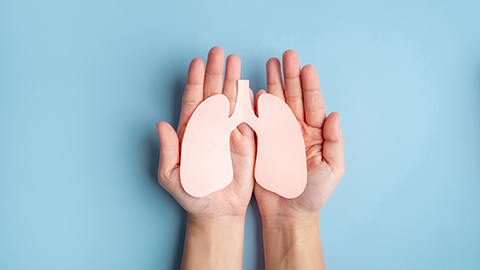
A client who is a nurse from the Philippines has a positive tuberculosis test. “It’s latent,” she claims. “Everyone in the Philippines tests positive for TB.” Could this be true? Is she infectious? Is it safe for her to receive massage? Tuberculosis, an infection with a long, deep impact on our history and culture, is not a disease of the past; it is very much all around us. Is this something we should be worried about? Listen on for more.
Resources: 
Pocket Pathology: /abmp-pocket-pathology-app
CDCTB (2021) Reported TB in the U.S., 2020- Drug-Resistant Tuberculosis, Centers for Disease Control and Prevention. Available at: https://www.cdc.gov/tb/statistics/reports/2020/drug_resistant.htm (Accessed: 24 August 2022).
CDCTB (2022a) Tuberculosis (TB) - Data and Statistics, Centers for Disease Control and Prevention. Available at: https://www.cdc.gov/tb/statistics/default.htm (Accessed: 24 August 2022).
CDCTB (2022b) World TB Day History, Centers for Disease Control and Prevention. Available at: https://www.cdc.gov/tb/worldtbday/history.htm (Accessed: 24 August 2022).
Fact Sheets | Drug-Resistant TB | Extensively Drug-Resistant Tuberculosis (XDR TB) | TB | CDC (2022). Available at: https://www.cdc.gov/tb/publications/factsheets/drtb/xdrtb.htm (Accessed: 24 August 2022).
Fact Sheets | General | Latent TB Infection vs. TB Disease | TB | CDC (2022). Available at: https://www.cdc.gov/tb/publications/factsheets/general/ltbiandactivetb.htm (Accessed: 23 August 2022).
Global Health - Newsroom - Tuberculosis (2020). Available at: https://www.cdc.gov/globalhealth/newsroom/topics/tb/index.html (Accessed: 24 August 2022).


About Til Luchau and Advanced-Trainings.com:
As a Certified Advanced Rolfer™, Til was on the faculty of the Dr. Ida Rolf Institute® for 20 years, where he served as Coordinator and Faculty Chair of the Foundations of Rolfing Structural Integration program. The author of the Advanced Myofascial Techniques textbook series (which has been translated into 6 languages), his regular Myofascial Techniques and Somatic Edge columns have been featured in Massage & Bodywork magazine since 2009, and (along with Whitney Lowe) he co-hosts the popular Thinking Practitioner Podcast. He is the Director of Advanced-Trainings.com which since 1985 has offered short, credit-approved professional trainings and certification for manual therapists of all types, in person and online.
Website: Advanced-Trainings.com
Email: info@advanced-trainings.com
Facebook: facebook.com/Advanced.Trainings1/
Instagram: instagram.com/tilluchau
YouTube: youtube.com/user/AdvancedTrainings
0:00:00.3 Speaker 1: Til Luchau's pleased to invite you to two amazing opportunities. Come to Til's popular hands-on sciatica training as it makes it's Zoom debut on August 12th. Get a full day of personalized tutoring, camera on supervision, and permanent recordings and CE credit, all at an amazing price. Til's new A-T Subscription gives unlimited access to a growing catalog of over 35 curated advanced myofascial techniques, feldenkrais and zoga movement classes for body workers. For as little as $20 per month, sign up now at advancedtrainings.com.
[music]
0:00:47.5 Ruth Werner: Hey, I Have A Client Who listeners, did you know I have a growing library of NCB approved one-hour online, self-paced, continuing education courses that you can do any time, anywhere. Well, now you know. Current classes include What's Next? Covid-19 updates from massage therapists and A massage Therapist's Introduction To Pharmacology part one. And brand new, A Massage Therapist's Introduction To Pharmacology part two. Classes are $20 each, and they confer one hour of continuing education credit. Wanna know more? Visit my website at ruthwerner.com and check it out. Be sure to sign up for my mailing list so you'll never miss a new class.
[music]
0:01:41.8 RW: Hi, and welcome to I Have a Client Who pathology conversations with Ruth Werner, the podcast where I will discuss your real life stories about clients with conditions that are perplexing or confusing. I'm Ruth Werner, author of A Massage Therapist's Guide to Pathology, and I have spent decades studying, writing about, and teaching about where massage therapy intersects with diseases and conditions that might limit our client's health. We almost always have something good to offer, even with our most challenged clients, but we need to figure out a way to do that safely, effectively, and within our scope of practice. And sometimes, as we have all learned, that is harder than it looks.
0:02:28.8 RW: Today's I Have A Client Who story is a surprising one, and it's about a topic I love to talk about. It came from a massage therapist who works in a hospital, which is relevant. And it goes like this, "Hi, Ruth, I have a question. I had a patient this morning who is from the Philippines and she's here working at our hospital as an RN. She tested positive for TB yesterday, and when speaking with her, she told me that she had it as a young child, and apparently all Philippine folk will test positive. It's latent TB is what she said. However, our employee health has her going for an X-ray to rule TB out. That being said, do we treat this as active TB until she's confirmed negative? I've cancelled her for today, but I'm curious due to the common occurrence." I'm so glad to get this question. TB isn't something we hear a lot about these days, although it was a big thing when I first entered this field. And of course, the history of TB is fascinating. We know it is in the human record for at least 9000 years, and it's been found in the bones of bison that date from 17,000 years ago. And here is a bit of interesting pathology folklore.
0:03:42.7 RW: Before the industrial revolution, folklore often associated tuberculosis with vampires. When one member of a family died from the disease, the other infected members would lose their health slowly. People believed this was caused by the original person with TB, draining the life from the other family members. Thanks, Wikipedia. This disease was named in 1832 when doctors associated the lumps that they found in the lungs of patients with this infection. It's tuberculosis, pathologic condition of having tubercles or lumps, and we'll get back to that in a minute. But the bacterium was first isolated and described 50 years later in 1882 by a German physician, Dr. Robert Koch. At this time in the late 1800s, TB was the cause of one out of every seven deaths in the United States and Europe. It had several names, 'consumption' was one, and this is because it would make people become very thin and wasted as they progressively lost lung function. If you've ever heard of scrofula, this was a type of TB that affected the neck and lymph nodes rather than the lungs. And legend had it that a touch from the king would cure scrofula. It was also called 'The White Plague' because it made people very pale. TB had such an impact on day-to-day life that it developed a long tradition in American and European fiction.
0:05:12.5 RW: Mimi from La Boheme had it. Fantine from Les Miserable, little Eva from Uncle Tom's Cabin, Jane Ayer's best friend, and many more. Even contemporary creators used tuberculosis in plots, including the video game, Red Dead Redemption 2. Many famous real people have had tuberculosis, including King Tut, Voltaire, John Keats, Emily Bronte, painter Paul Gaugin, Edgar Allan Poe, Eleanor Roosevelt, Nelson Mandela, and Adolf Hitler. There's a study in opposites. Obviously, not everyone who has it dies of it. And we have many public figures today who are Tuberculosis survivors, including Tina Turner, Ringo Starr, and Cat Stevens. So it's all around us. And as you heard in our contributor's story, there are places where almost everyone is at least exposed to this bacterium, but, and here's the good news, TB exposure is not the same as active TB disease. So let's talk about that.
0:06:16.4 RW: This pathogen is named Mycobacterium tuberculosis, and I'll include a picture of this cootie in our show notes. It's called a Mycobacterium, Myco means fungus because it grows in a mold-like pattern when it's on the surface of a culture. It is however a bacterium. It is rod shaped and it has a tough spore, an outer coating that allows it to survive outside a host for a prolonged period, and that also helps to protect it from the corrosive chemicals of phagocytosis. When these pathogens are expelled from a person with an active infection through coughing, they can be inhaled by a new host. Most infections begin in the lungs where these colonies of bacteria can survive being attacked by white blood cells. They can replicate and carve out hollow areas that are then encased in connective tissue cysts. Those are the lumps. When these lesions grow and corrode into bronchial pathways, then bacteria-laden sputum along with pus and necrotic tissue can be expelled in coughing. People with active tuberculosis who are coughing and bringing up a lot of material, bloody material, are literally coughing up a lung. And they are also likely to have persistent fever, inflamed lymph nodes, shortness of breath, and many other signs of persistent lung infections.
0:07:46.0 RW: The CDC lists these as general symptoms of tuberculosis active infection, unexpected weight loss, loss of appetite, night sweats, fever, fatigue and chills. When it's in the lungs, we would also expect to see coughing for three weeks or longer, hemoptysis, which is a fancy word for coughing up blood, and chest pain. And then other symptoms will develop depending on the part of the body that's affected. As we've said, most TB infections are in the lungs, but it can move outside the lungs as well, this is called extra-pulmonary TB, and we might find these cysts filled with bacteria on bones, embedded in organs all over the body.
0:08:29.1 RW: But here's a very, very important piece of information. Most people who are exposed to TB bacteria do not develop active disease. They are exposed to the bacteria, the bacteria are confined, and that's it. That's the end of their interaction with the disease. Their TB test, which is a skin scratch test, usually to look for reactivity is positive because it's in their body and they have launched an immune system reaction against it. But they don't have active tuberculosis and they're not coughing up bacteria-laden sputum, in fact, they are not infectious at all, and this is what we call latent TB. How often does latent TB turn into active TB infection or sometimes it's just called TB disease? This depends on several things, it happens more often in children than we see it in adults. It happens in people who are otherwise weakened with other health challenges more often than in people who are generally healthy. If it happens at all, usually it happens within the first couple of years after that first TB exposure, but it is possible for TB to become active after many years of latency. We have effective treatment options for tuberculosis, I'm happy to say in the form of antibiotics, but this is a little tricky and challenging for a few reasons.
0:10:00.9 RW: Firstly, TB grows really slowly. And you'd think that would be good, but it actually makes it harder to treat. Most antibiotics work during the process of cellular replication, and because TB doesn't replicate rapidly, this takes a long course of TB medication nine months long to be reasonably sure that all the possible bacteria have been killed, and those antibiotics are not without possible uncomfortable side effects. If someone doesn't take their full course of antibiotics or if they take their antibiotics successfully, but then they get TB later, that new version of tuberculosis may mutate into a drug resistant form. Then if that becomes an active infection, they can share that drug-resistant form of bacteria with anyone around them, and this is called multi-drug-resistant tuberculosis. It is much harder and much more expensive to treat than regular tuberculosis or drug-susceptible tuberculosis. But there's more, because we have graduated to a form of this pathogen called XDR TB, which means extremely drug-resistant tuberculosis. This pathogen is so resistant that our only recourse is to revert back to our very earliest antibiotics, and sometimes they don't work at all. The mortality rate for treated XDR TB is about the same as that for untreated drug-susceptible TB. Plus, if the person ever shares these bacteria with someone else, the newly infected person will also have extremely drug-resistant tuberculosis.
0:11:53.0 RW: How common is tuberculosis in the United States? Well, here's what I got from the statistics page at the CDC. 7860 new cases were reported in 2021 in a total of 60 states and jurisdictions. And that is a substantially lower number than in previous years, but that might reflect a lack of access to health care during the pandemic rather than a true drop in numbers. Those numbers usually hover around 9000 diagnoses a year. In 2020, a total of 456 cases of drug-resistant TB were reported, and I'm happy to say only one case of extremely drug-resistant tuberculosis was reported in the United States. And in our country, up to 13 million people are living with latent TB. One final thing, a person who has latent TB, even when they undergo that nine-month course of antibiotics will still test positive for TB. So they need to have documentation of having completed treatment if they wanna work in certain settings like in a hospital, like the person described in today's story.
0:13:11.4 RW: Once again, this is what we heard, "I had a patient this morning who's from the Philippines and she's here working at our hospital as an RN. She tested positive for TB yesterday, and when speaking with her, she told me she had it as a young child and apparently, all Philippine folks will test positive. It's latent TB is what she said. However, our employee health has are going for an X-ray to rule TB out. That being said, do we treat it as active TB until she's confirmed negative? I've cancelled her for today, but I'm curious due to the common occurrence." This patient needs to be sure that her TB is latent and an X-ray will give some hints about whether she has any of these cysts in her lungs. It almost certainly is latent because she has no symptoms. She will probably have to go through antibiotic treatment, but she's not infectious and it is completely safe for her to receive massage or to be close to other people. I don't wanna suggest that tuberculosis isn't serious. About 1.7 billion people around the world have been exposed, that's 23% of the world's population. And it kills one and a half million people each year, making it the leading cause of death by infectious disease, that means more than HIV, more than malaria. And of course, those numbers were pre-COVID. But I've been watching the TB numbers for a long time, and I can say that these are trending down and that's really good news.
0:14:43.0 RW: Just a few years ago, we saw tuberculosis in 25% of the world's population causing 1.7 million deaths a year. Will our contributor get tuberculosis from working with this nurse if she has a latent infection? No. Could our contributor get TB from other sources? Maybe, depending on where they practice. But that's true for all of us. As a practicing massage therapist in a developed country, you are unlikely to be exposed to a person with active tuberculosis disease unless you work in a healthcare setting that cares for these patients, or if you work in a homeless shelter or a prison. Your chances are low, but not zero. And that's a level of privilege that much of the world doesn't share. That said, being tested for tuberculosis is quick and easy and inexpensive, you can do it at your local drug store. The cost of the antibiotic treatment for drug-susceptible tuberculosis is largely subsidized by our government because we have a vested interest in keeping our numbers in the United States low. So preventing the risk of new tuberculosis exposures is one way we can continue to see those numbers of new infections, active disease and deaths continue to go down.
0:16:02.7 RW: Hey everybody, thanks for listening to I Have a client Who, pathology conversations with Ruth Werner. Remember, you can send me your I have a client who stories to ihaveaclientwho@abmp.com. That's, ihaveaclientwho, all one word, all lowercase. @abmp.com. I can't wait to see what you send me and I'll see you next time.
[music]